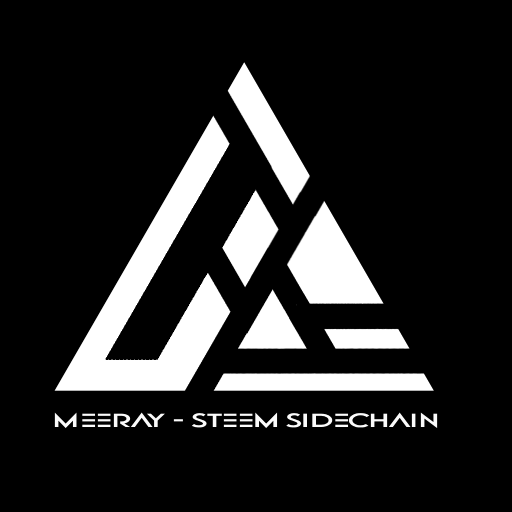What About Turning Any App into a Real dApp on Steem?
I’m excited to share a new architecture idea for MeeRay, the sidechain project I’m developing with @futureshock, supported by the community through our SPS proposal.
If you missed it, MeeRay is a DeFi sidechain for Steem, bringing popular DeFi features into our ecosystem in a fully decentralized way.
Read more about MeeRay (formerly Echelon): https://steemit.com/steemdev/@futureshock/proposal-bringing-steem-back-to-the-future-with-a-decentralized-sidechain-for-dapps-and-token-economies
.png)
🚀 The Vision
Traditionally, creating a dApp on Steem often requires developers to maintain their own database and replay blockchain blocks to reconstruct state. While this works — if the code is public and anyone can reproduce the same result — it’s cumbersome, error-prone, and hard for small teams to manage.
MeeRay changes that. Any app can become a true decentralized application without managing its own database or block replay logic. Developers can build their own layer on top of the MeeRay main layer, and the state of their app is decentralized and maintained by some of the MeeRay witness network.
- Main layer: Anchored to Steem, handles all assets (NFTs, tokens, balances).
- App layers: Created by developers or communities, running TypeScript “smart contract modules” that define app logic and state.
Apps are fully decentralized, verifiable, and reproducible — no need of a backend replaying blocks or private DBs.
⚙️ How It Works
- Developers write small TypeScript modules for their app logic — games, content platforms, analytics, workflows, or community tools.
- Modules define the app-specific layer on top of Meeray.
- Data and state are decentralized through the Meeray witness network, so no centralized servers or private databases are required.
- Communication with the main layer happens via Steem
custom_jsonoperations, keeping all assets and value transfers secure. - Each witness node that participate to the app-specific layer can be used as an HTTP endpoint to retrieve datas.
Example:
- A player joins a game tournament by spending a ticket (NFT on the main layer).
- The game layer detects the burn or transfer of the NFT, processes the action, and updates its decentralized state.
- Rewards or asset transfers are settled on the main Meeray layer, secured by Steem/MeeRay main layer consensus.
🔗 Community & Modular Participation
MeeRay also opens the door for modular community participation:
- Any community can run a module that distributes tokens over Steem votes.
- Individual users can run autovoters or scripts via simple TypeScript modules made by any developer or create their own blog/website using their steem content using the CMS module/layer.
- By running these modules, participants contribute to their app layer while also supporting the larger ecosystem by operating a Meeray witness node.
This allows small teams, communities, or even single users to deploy their own decentralize backend, actively participate in the MeeRay Sidechain infrastructure, earn rewards, etc...
✨ Why Meeray should have a multiconsensus layer architecture?
- Frictionless dApp creation: No need for a separate database or block replay logic — just a TypeScript module. (a layer module can be private and run by a single team using one or few nodes, this is particularly useful in some game code)
- Decentralized app state: Layers are maintained by the witness network, verifiable by anyone. @futureshock will optin in all consensus layer after approval of the module)
- Modular, scalable architecture: Each app runs independently but leverages the main layer for asset security.
- Fast & predictable: Uses Steem’s 3-second block rhythm, ideal for idle games, turn-based apps, and interactive experiences.
- Community empowerment: Small modules allow individuals or groups to run apps, reward distributions, or scripts, contributing to the bigger vision of building the future of Steem.
- Very accessible: MeeRay nodes can run on Mac, Windows or Linux.
🎯 The Result
With Meeray, any app can become a real dApp:
- Developers write their logic as simple modules. (Some existent app migration can take time)
- Users interact with apps that are fully decentralized and verifiable.
- Communities and users can run modules, autovoters, or scripts while supporting the network as witnesses.
- All assets remain secure on the main Meeray layer, anchored to Steem.
MeeRay removes the need for private databases and block replay, making dApp development easier, faster, and truly decentralized, while giving the community ways to actively participate.
I’m curious: could this model make it easy for Steem to host the next generation of blockchain games, content platforms, dApps, and community tools?
It sounds very interesting.
If no separate database is required for the dApp, this definitely reduces the effort involved in database connection, etc.
At the moment, I cannot yet imagine what the scripts for the apps will look like. I would currently compare it to smart contracts. Sample scripts or tutorials would probably be useful for this in due course.
At the moment, I am busy with other tasks, but at some point I will try to start Meeray myself and see it live. :-)
Postingan ini sangat menarik dan memberikan banyak informasi yang bermanfaat. Saya senang membaca tulisan seperti ini karena bisa menambah wawasan dan inspirasi. Terima kasih sudah berbagi pengalaman dan cerita di sini. Semoga terus semangat membuat postingan yang berkualitas dan menginspirasi banyak orang di platform Steemit ini.